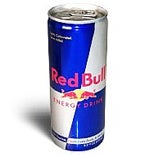Red Bull, a small can of energy drink, strengthens your physical resistance, makes it easier for you to concentrate, speeds up your reaction time, boosts your energy level, and improves your mood. Thanks to a skillful marketing campaign, excellent distribution, and good packaging design, Red Bull is now available in almost 100 countries around the globe. Invented by an Austrian entrepreneur, Red Bull targets young people and athletes, two market segments that are attractive but hard to conquer. Will the drink that “gives you wings” continue to fly with so much energy?

Sign up to stay informed about our latest article releases.